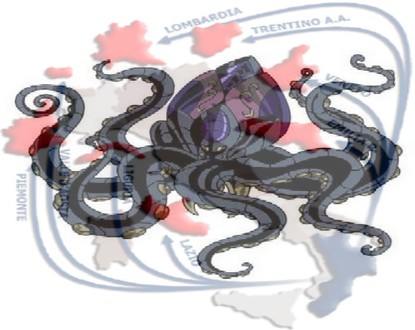The ‘‘Ndrangheta‘ has become the most significant criminal organization thanks to its control over the Italian and European cocaine trade. In 2007 (the last known estimate), a Eurispes investigation calculated a total annual revenue of 44 billion for the ‘Ndrangheta. The drug revenue? According to Eurispes, 27 billion and 240 million euros.
With such enormous financial resources, investing in any economic sector is not an issue, as doors remain wide open, especially during times of crisis.
The proceeds from cocaine and drug trafficking are merely tools enabling the “n’drine” to achieve their true and undoubtedly most challenging goal: the ascent to power.
This cause-and-effect relationship is never mentioned; instead, there is talk of “infiltrations” into the real estate, commercial, or public markets. As if to defeat the N’drangheta, it would suffice to prevent the laundering of money through pizzerias and bars.
Cocaine money serves not only to buy businesses but also to create companies engaged in construction: construction contracts and public services mean contacts with local politics, contacts with local politics mean the opportunity to reach national politics, and this kind of relationship (combined with significant economic availability) allows access to power.
In this regard, there has been recent discussion of the dissolution of municipal councils in Bordighera, Ventimiglia, and Imperia, with former mayors being indicted for alleged collusion with the N’drangheta.
Without going into details, it is easy to understand that these are small players and that to know those who deal the “cards of the game,” one would need to go up the political hierarchy of the territory, or even nationally.
Regarding the possible “infiltration” of this criminal organization in Nice and its region, to know more, it would probably be useful to follow the “recipe” of anti-mafia magistrates Falcone and Borsellino: “Follow the money.” For applying this with some success, the two are considered heroes in the fight against crime.
For years, Italian crime-fighting officials have continued to warn against the alarming expansion of the N’drangheta, the Calabrian mafia, which is more impenetrable, more violent, and more dangerous than the Sicilian mafia.
Practically in vain. Notably because the criminal association, which is thought to have about 5,000 members (the equivalent of Cosa Nostra but for a territory ten times less populated than Sicily), seemed much quieter until now than its island cousin. For example, the N’drangheta has never openly challenged the state by organizing spectacular attacks like the bombings against anti-mafia magistrates Falcone and Borsellino in 1992.
Even though it does not hesitate to ruthlessly eliminate its adversaries, the N’drangheta has always sought to keep a low profile to favor its criminal development. It is organized in a horizontal manner, with each clan managing its own territory, unlike the mafia structured in a pyramid with “la cupola” (a sort of board of directors of various Cosa Nostra godfathers) at the top.
In a few decades, the N’drangheta (whose name may derive from the Greek “andragathia,” meaning courage and virtue) has evolved from a small Mezzogiorno association staging kidnappings to a multinational of organized crime. Like the mafia, it once developed by protecting small farmers against large landowners.
But today, it is an association financed through extortion and the control of public tenders (whether in the healthcare or infrastructure sector), as well as the drug market, infiltrating abroad in the wake of Italian immigrant communities.
Investigating magistrates and the police acknowledge that the organization’s fragmented structure in small, tightly-knit family clans makes the fight very difficult. The latest estimate suggests there are 166 “n’drine.”


